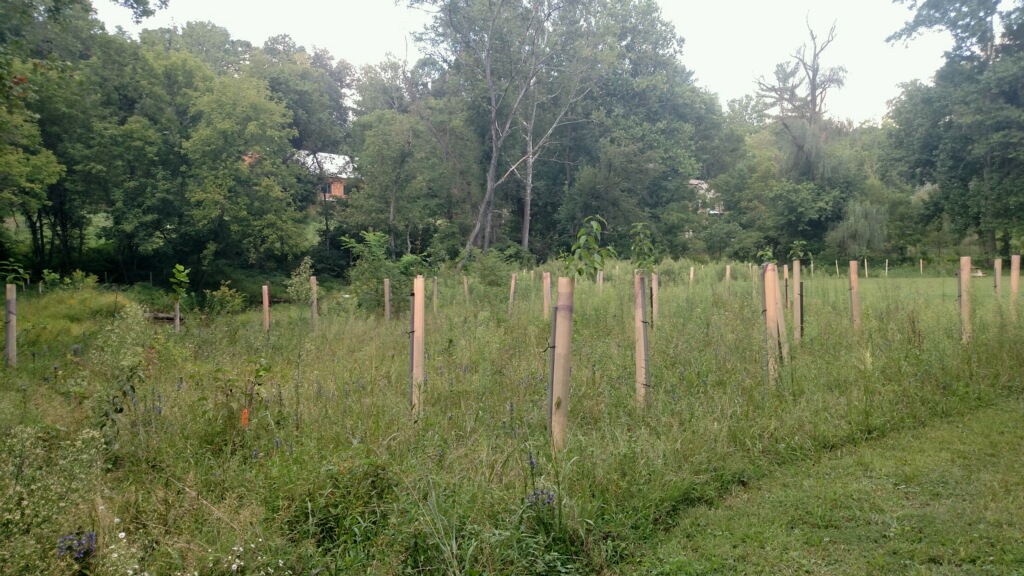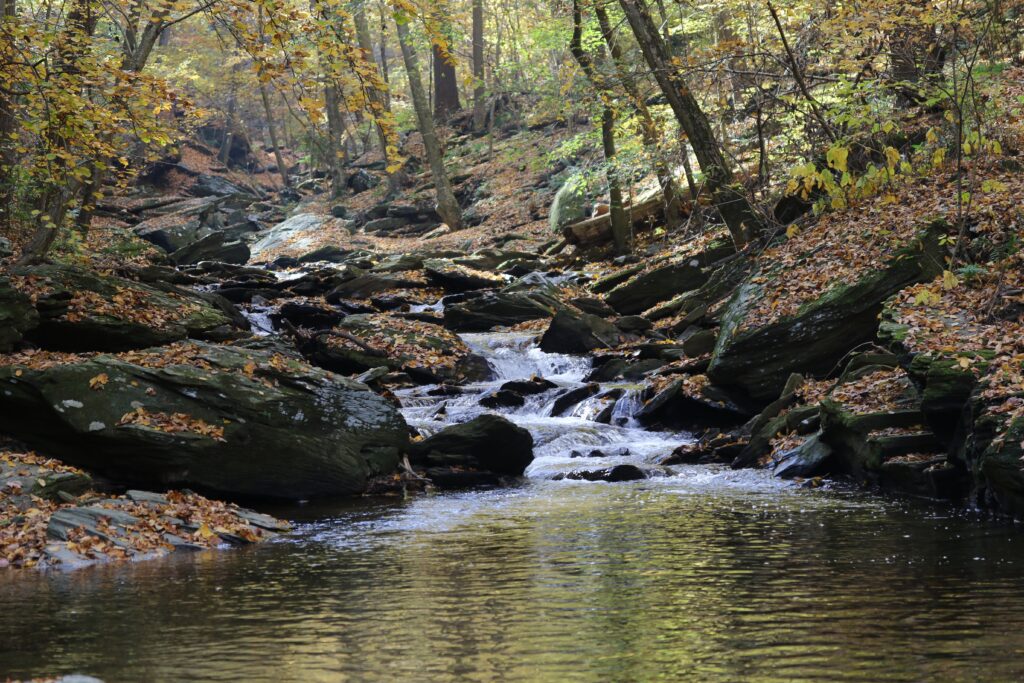This Lancaster Water Week, we’re working with the Keystone 10 Million Trees Partnership to give away free native trees. It may not be obvious how planting something on land can impact the health of streams and rivers, but the relationship between trees and water runs deep (pun intended).
Trees Prevent Water Pollution
You’ve probably heard this statistic: There are around 1,400 miles of streams and rivers in Lancaster County, and over half of them are considered impaired, or polluted.
When rain falls and travels over the ground before entering waterways, it picks up pollutants. According to the U.S. Environmental Protection Agency (EPA), the most common pollutants from stormwater include sediment, pathogens, nutrients, and metals.

Riparian forest buffer
Sediment – essentially soil in water – is the largest surface water pollutant by volume in Pennsylvania, according to Penn State Extension. Sediment that floats in a body of water, making it cloudy, creates unhealthy waterways in several ways. It prevents sunlight from reaching aquatic plants and limits their ability to photosynthesize, thus reducing the amount of oxygen in the water. It can make it harder for fish gills to absorb oxygen and for predators like brook trout to see their food, explains Penn State Extension, and it also smothers fish eggs.
Additionally, sediment can also settle to the bottom of a stream bed and accumulate, reducing the amount of habitat for fish, amphibians, and aquatic insects. And when it enters a waterway, it can carry other pollutants like nutrients, heavy metals, organic chemicals, or pathogens with it.
That’s where the trees come in! Trees, shrubs, and other plants help filter pollutants like these out of runoff before they can contaminate streams and rivers. When we plant trees and other plants along waterways in riparian forest buffers, they help protect our waterways from nutrients, pesticides, sediment, and other contaminants carried by stormwater runoff.
In Lancaster County, we appreciate our agriculture! Trees help keep Pennsylvania’s rich fertile soils in place on our farms and in our communities, preventing rainwater runoff from polluting our rivers with the soils that help grow the food we eat.
Trees are Cool(ing)
We’ve all been there – standing outside on a hot day with the sun beaming down, seeking out shady spots under trees that provide some respite from the heat. Research backs up what we seem to know instinctively.
According to the EPA, trees and other plants lower temperatures by providing shade and through evapotranspiration (water evaporates into the atmosphere from soil and other surfaces and transpires into the atmosphere from plants). Evapotranspiration alone or with shading can help reduce peak summer temperatures by 2-9 degrees Fahrenheit, according to the EPA. The EPA also says that shaded surfaces can be 20-45 degrees cooler than peak temperatures of unshaded materials.
On the human side of things, trees can help reduce energy use and costs. When we use less energy, pollution and greenhouse gas emissions associated with energy production are reduced, as well.
Bonus: Trees also absorb and store carbon dioxide, a major contributor to climate change, and according to the Arbor Day Foundation, one large tree can provide a day’s supply of oxygen for up to four people.
And on the water side of things, trees are keeping it cool there, too. Trees along waterways provide shade, shelter, and food for fish and other aquatic organisms, according to the U.S. Department of Agriculture. Sediment in waterways can also increase water temperatures, Penn State Extension notes, so trees help keep water temperatures from heating up by filtering sediment from runoff and mitigating erosion along stream banks, too.
Trees Provide Habitat

Photo by Keith Williams
A healthy waterway doesn’t just have clear water; it also supports a whole ecosystem of life! In the water are fish along with amphibians and aquatic macroinvertebrates that may spend some of their lives underwater and some on land. Terrestrial species like birds may eat those aquatic species and then fly back to their nests in the trees.
All those animals rely on clean waterways to survive, and trees protect those waterways while providing shelter for species that live both in and near the water – species that are all part of the ecosystems surrounding water!
Birds and bugs may use trees for shelter on land, while aquatic insect larvae like those of caddisflies may use leaves or twigs that fall from trees to make shelters under the water. Macroinvertebrates like caddisflies and stoneflies also eat leaf matter that falls into the water.
When planting trees for habitat, it is important to remember that it is best to plant native species! Native plants have an established relationship with our native animal species and help support biodiversity, creating more resilient ecosystems.
Watch for opportunities to take home your own free native tree during Lancaster Water Week, June 7-15!
